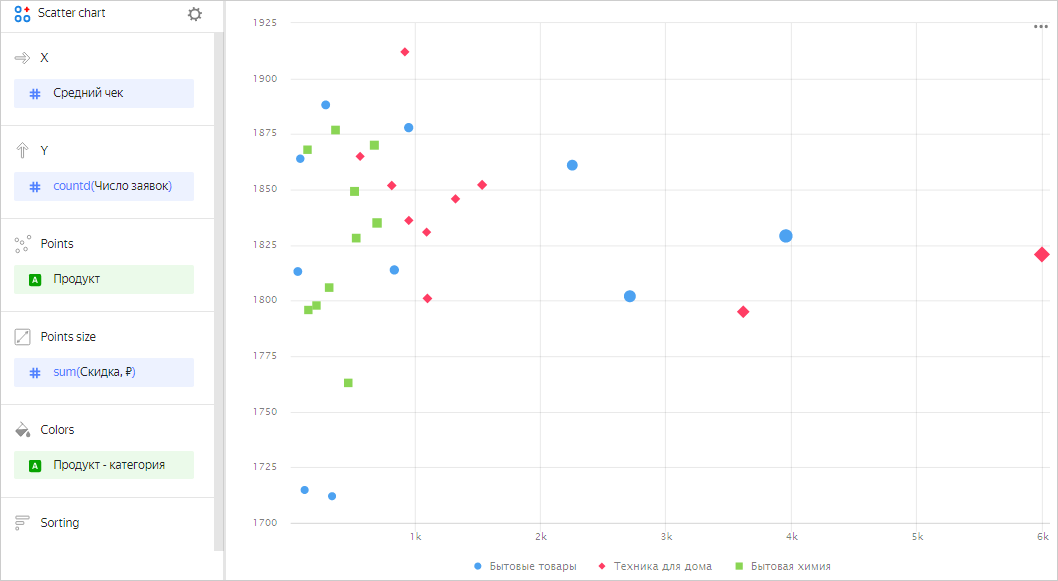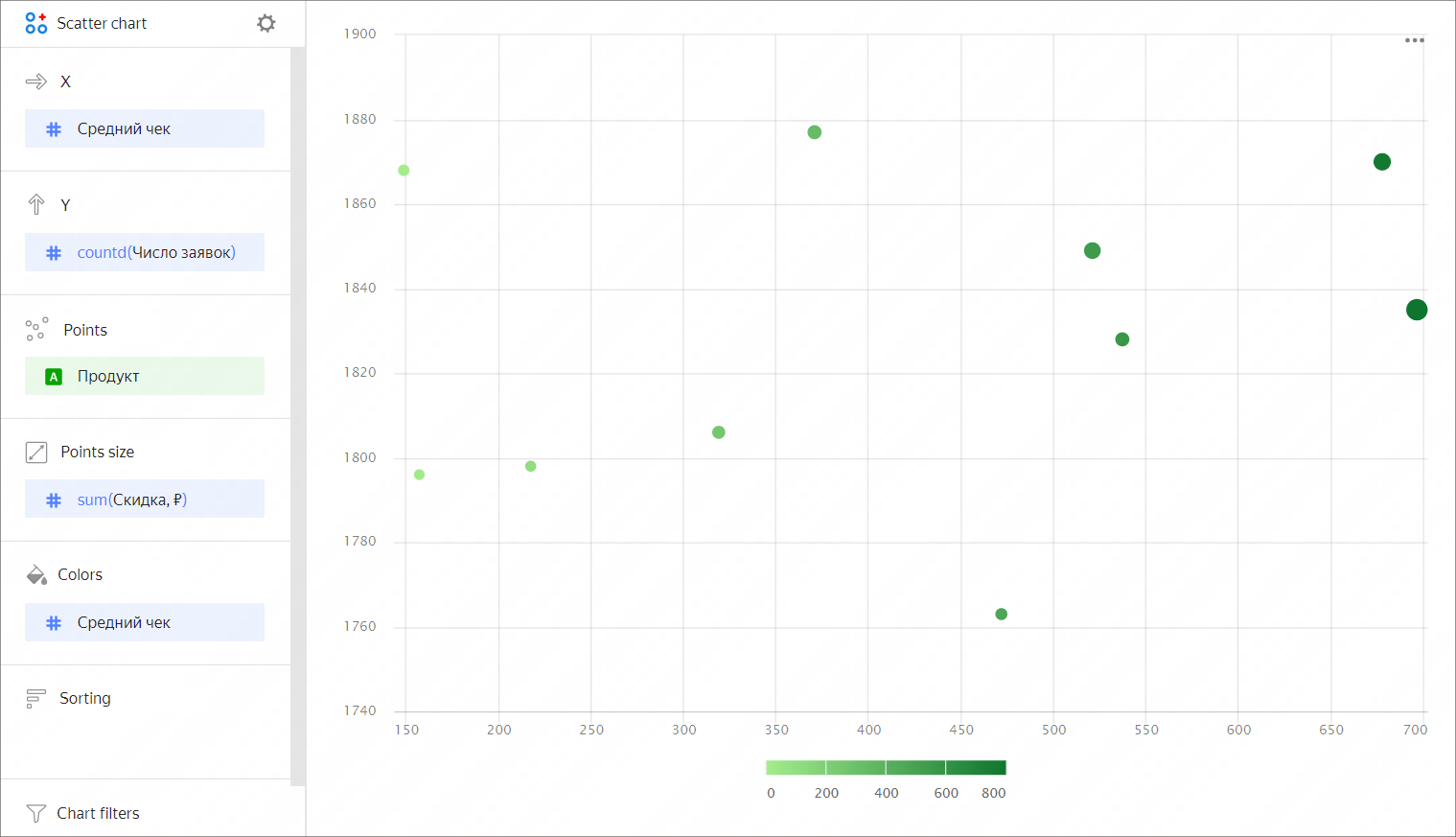Scatter chart
A scatter chart shows the relationship between two values (dimensions or measures). Their values are represented as points.
-
A scatter chart always has two axes: the values of one dimension or measure are plotted along the X-axis and those of the other along the Y-axis. A data point that links these two values is displayed at the intersection of the X and Y coordinates.
These data points can be distributed along the X-axis evenly or unevenly, depending on specific data.
-
Use this type of chart if you need to find the dependency between dimensions and measures or show a range of values. For example, the relationship between the average order value and the number of orders for a product.
-
You can also represent dependencies on a scatter chart using point sizes. The size of a point depends on the measure value: the higher the value, the larger the point size.
Example
For example, the size of a point may depend on the discount on a product.
VisualizationSource table (5 rows)
Product Category Average order value Number of orders Discount Floor cleaner liquid Household cleaners 153.0 1 0 Multicooker with 40 modes Home appliances 3442.0 1 0 Liquid detergent for colored clothes Household cleaners 525.0 1 0 Carpet detergent Household cleaners 463.0 1 0 Lemon dishwashing liquid Household cleaners 362.0 1 0 The dataset is built on Sample ClickHouse connection tables.
-
You can use a gradient in a chart by adding a measure to the Color section. For example, the higher the product's average check, the darker the point.
Example

Wizard sections
| Wizard section |
Description |
|---|---|
| X | Dimension or measure. Sets the X-axis value. For String type fields, you can configure using basic Markdown in Yandex DataLens syntax: click the icon before the field name and enable Markdown. |
| Y | Dimension or measure. Sets the Y-axis value. For String type fields, you can configure using basic Markdown in Yandex DataLens syntax: click the icon before the field name and enable Markdown. |
| Points | Dimension. Specifies the number of points on the chart. |
| Point size | Measure. Sets point size depending on the measure value. |
| Colors | Dimension or measure. Affects the color of points. |
| Sorting | Dimension. You can only use a dimension from the X axis. Affects the sorting of the X axis. The sorting direction is marked with an icon next to the field: |
| Filters | Dimension or measure. Used as a filter. |
Creating a scatter chart
To create a scatter chart:
Warning
If you use a new DataLens object model with workbooks and collections:
- Go to the DataLens home page
- Open the workbook, click Create in the top-right corner, and select the appropriate object.
Follow the guide from step 4.
-
Go to the DataLens home page
-
In the left-hand panel, select
-
Click Create chart → Chart.
-
At the top left, click
- Select Scatter chart as the chart type.
- Drag a dimension from the dataset to the X section.
- Drag one or more measures from the dataset to the Y section. The values will be displayed as points at the intersection of the X and Y axes.
Additional options
Also, you can:
-
Change the color of points:
- Drag a dimension or measure to the Colors section.
- Click
-
Resize points:
- Drag the measure to the Point size section.
- Click
Note
A scatter chart isn't suitable for visualization of data over time.
-
Specify an additional dimension. To do this, drag a dimension to the Points section.
Configuring display of null values
-
If the source data has a row with
nullfor value, this point will not be plotted on a chart with default settings.For example, if the source has a row with a date (
20.07.2022) but the sales total for it is not specified.To set up empty value display on a chart:
- Click
- In Empty values (null), select
Display as 0. - Click Apply. Now the chart will use
0instead ofnull.
- Click
-
If a row is missing from the source data completely, the chart section settings will not change the way the chart is presented.
For example, if the source does not have a row with a particular date (
20.07.2022), nothing will be shown for this date on the chart.
For more information, see Configuring the display of null values in a Yandex DataLens chart.
Recommendations
-
Labels. If the category values are too verbose, make them shorter so that the chart labels look neater.
You can use string functions in calculated fields or the CASE conditional statements.
- The axis scale often varies and may start with a value other than 0. Pay attention to value signatures.
- Colors. When visualizing multiple measures, select colors carefully. They should be distinguishable and contrasting.